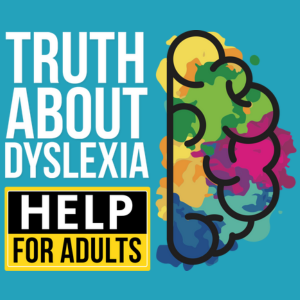
Dyslexic Fonts.. Do They Work?
Share
If you’ve ever wondered about dyslexic fonts, you’re not alone. In this episode, I put them to the test and share my honest thoughts about whether they truly help. It’s a personal story that digs into reading challenges, how to make text feel less intimidating, and whether these fonts are worth your time.
The podcast covers what dyslexic fonts are, why they might be easier to read, and what happened when I tried them. I also talk about the subtle differences that can make a big impact. If you’re keen to see whether these fonts deserve a spot in your digital toolbox, read on for my personal take.
What Is a Dyslexic Font?
Dyslexic fonts are designed with unique shapes and spacing that aim to minimise reading errors. Letters might have extra weight on parts of each character or slightly wider spacing so your eyes can track words more smoothly.
Many people say these specially created fonts reduce letter reversing or skipping words. Others suggest it’s just a clever idea that doesn’t always hit the mark. I was curious to know where the truth lies. That’s why I decided to see if they really work for my own reading.
Why I Decided to Try Them
As someone who’s dyslexic, I’m always on the lookout for ways to make reading less exhaustive. It’s never as simple as picking up a book and breezing through the words. I have to zero in on each sentence, which can be draining.
When I heard rumblings about dyslexic fonts, I felt hopeful but a bit sceptical. We’ve all seen trendy tools that promise the world then fizzle out. I needed a real-world test. So I spent a few days switching over to a dyslexic-friendly font for emails, articles, and short stories to see how it felt.
"The biggest surprise was how much calmer my eyes felt when I read long paragraphs. It wasn’t a magic cure, but it definitely took some of the edge off."
What Happened When I Gave Them a Go
At first, it felt a bit strange to read text that looked bolder in certain spots. My brain took time to adjust. After a few hours, something clicked and the reading started to flow. I realised I was making fewer mistakes and pausing less often.
I’m not saying it was a life-changing experience overnight, but it did seem like my eyes could keep moving without as many stops. It reminded me of the first time I tried reading on a tinted screen—small changes can make you feel more grounded in the text.
Pros and Cons
Here’s a quick look at what I discovered:
- Reduced Skips: I found myself skipping fewer words than normal.
- Less Strain: My eyes didn’t ache as much, which helped me stay focused.
- Easy to Install: Many dyslexic fonts are free or low-cost, so it’s not a big hurdle to try them out.
- Limited Choice: Some designs might look unusual if you’re used to standard fonts like Arial or Times New Roman.
- Not a Cure-All: If I was tired or stressed, the font alone didn't fix those issues.
In the end, using dyslexic fonts isn’t the sole answer. They help, but they don’t magically solve every reading struggle. It’s one tool in a bigger kit that might involve tinted overlays, text-to-speech apps, or just taking regular breaks.
Should You Give Them a Try?
If you’re dyslexic or you find reading especially tiring, it can’t hurt to explore dyslexic fonts. They won’t instantly turn you into a speed reader, but they could ease some of the tension and frustration.
Don’t expect miracles on day one. Give yourself time to adapt and approach it as an experiment. If it doesn’t work, there’s no harm done. But if you notice even small improvements, it’s worth keeping in your routine.
Below are the biggest lessons I picked up:
- It’s about small gains, not giant leaps.
- Dyslexic fonts work best with other strategies.
- Everyone’s reading style is different.
- Testing it for yourself is the only real way to know.
If you’re intrigued, I’d encourage you to try a dyslexic font for a few days. Pay attention to how engaged you feel and whether you lose focus less often. You might be pleasantly surprised.
Key Takeaways
- Dyslexic fonts aim to make letters clearer, reducing mix-ups.
- They won’t fix all reading woes, but they can lessen fatigue.
- Installation is simple, so there’s minimal risk in giving them a go.
- They work best when combined with other reading strategies.
Curious to learn more and hear all the details? Listen to the full episode at the top of this page. It’s where I share my raw moments, extra tips, and personal insights that could help you on your own dyslexia journey.

